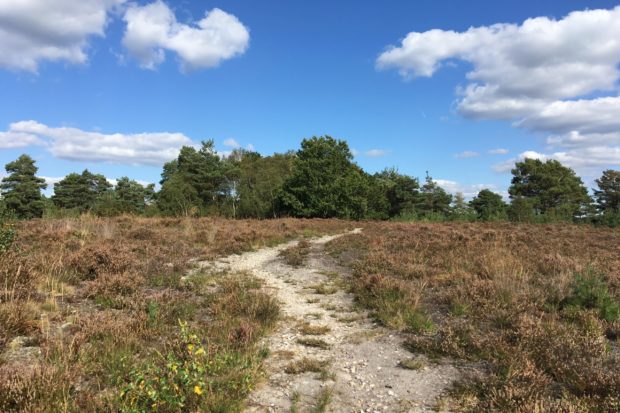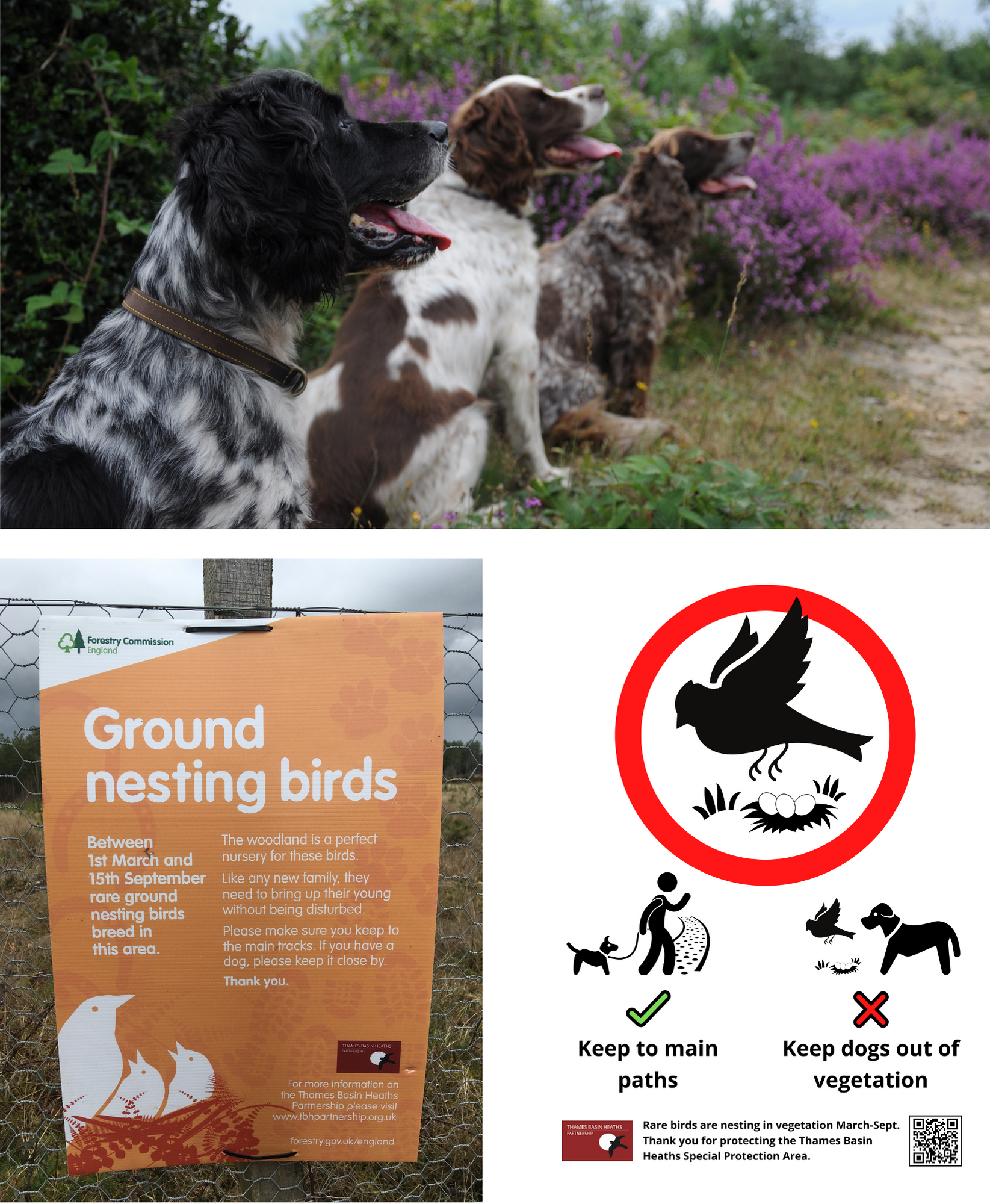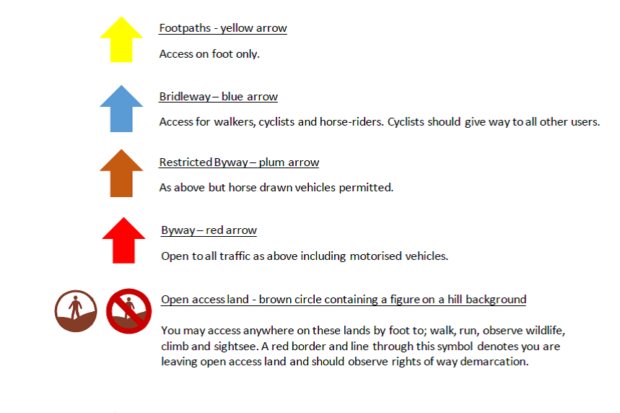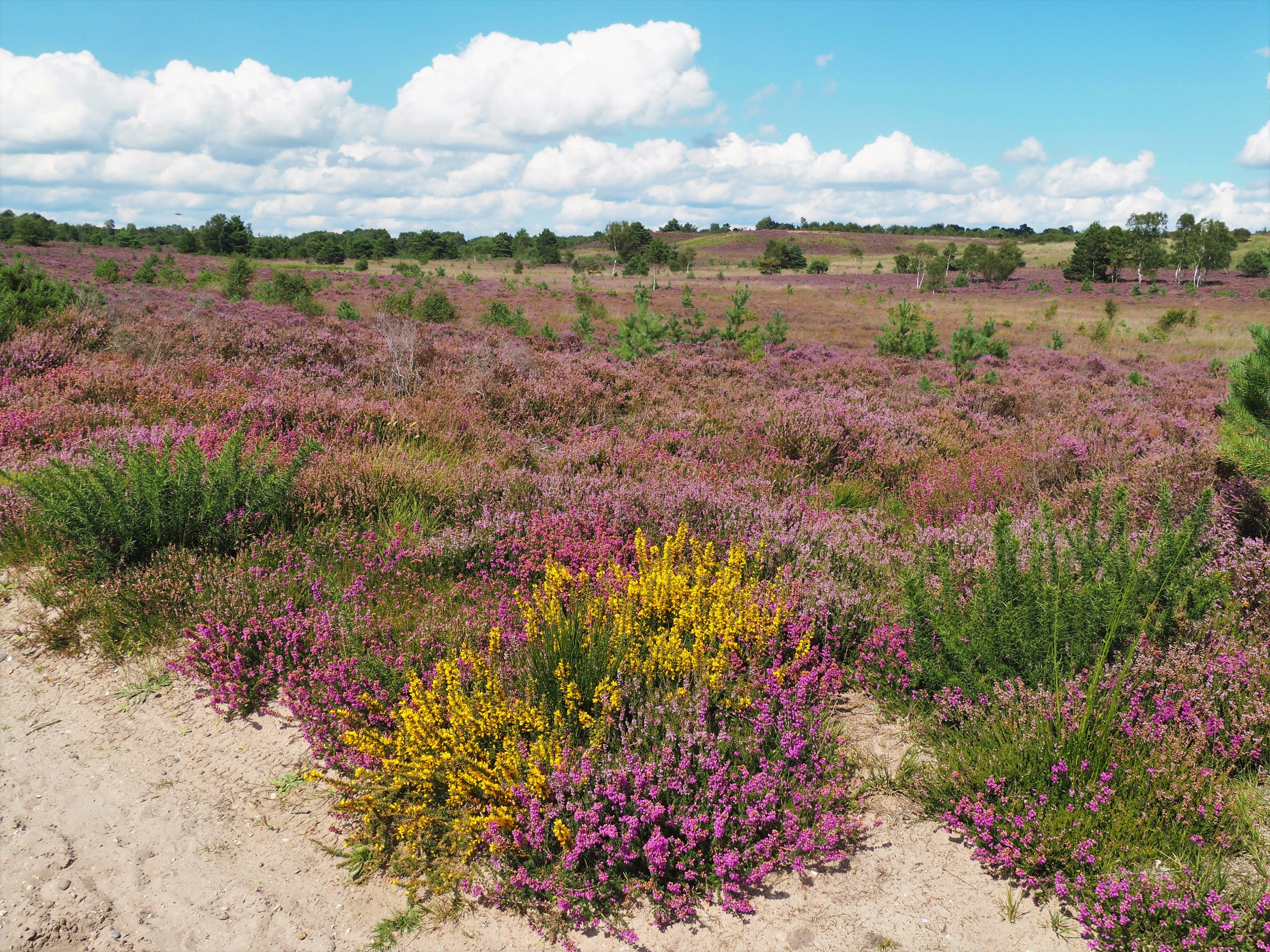Countryside access, wildlife and you

England has 190,000 km of public rights of way and 865,000 hectares of open access land for us all to enjoy, plus countless parks, beaches, woods, towpaths and more. It would be easy to take these for granted and see them as a right not a privilege, but it’s helpful to remember that responsible and lawful use is the best way to ensure these places remain open and free for everyone.
Here are a few points to consider when using your local heathlands and the wider countryside.
Open access land and rights of way
Permissions for leisure activities
Access on the Thames Basin Heaths Special Protection Area – a local focus
Protecting wildlife
What animals are protected?
Why can people on the TV pick up protected animals?
Wildlife on the Thames Basin Heaths SPA – a local focus
Find out more
Open access land and rights of way
It’s a good idea to be familiar with the different types of public rights of way and how they’re waymarked:
The Countryside and Rights of Way Act 2000 (CROW Act) provides the official guidance. Open access lands are mapped areas of open country (mountain, moor, heath, down) or common land. You can exercise your ‘right to roam’ on foot anywhere on open access land.
When walking dogs, consider the wildlife and livestock around you. Access rights can often take you through military training areas, farms and other places of work. A condition of access to open access land under the CROW Act is that dogs are on short leads (under two meters) between 1st March and 31st July and at all times near livestock. This helps protect livestock and wildlife such as ground-nesting birds.
Remember, some areas may appear as open access on maps, but may not be in practice. This is officially recognised and includes land under Ministry of Defence (MOD) Byelaws, such as military training areas. There are several of these in the Thames Basin Heaths area.
It’s worth remembering too that on non-open access land, public rights of way only permit you to pass along the linear route. They don’t entitle you to stray or to stay for another purpose, so camping or picnicing, for example, would be illegal.
Permissions for leisure activities
Permission is needed for many leisure, or commercial, activities on public rights of way and open access lands, including driving vehicles, drone use, model aircraft, foraging, shooting, metal detecting, swimming and lighting fires/camping. Contact the landowner if unsure. Often horses and bicycles are not automatically allowed, but are permitted at the landowner’s discretion.
Access on the Thames Basin Heaths Special Protection Area – a local focus
We’re fortunate that our local heaths have some incredible and rare wildlife and are designated a Special Protection Area. We ask both people and dogs to keep to the main paths, especially March to September. This is to prevent disturbance to rare ground-nesting birds, which are amazing in themselves, and help give protection to our heathland spaces. Please look out for our signs when you’re out and about.
A large part of the Special Protection Area is used by the Ministry of Defence. Please follow access guidance from the MOD, such as ‘Red Flags’ flying indicating no access, and be considerate. This is for your own and the troops’ safety.
We also ask you to pick up your dog’s waste. Dog waste changes the soil composition and has negative effects on plant diversity. It also poses a health risk to all visitors and, on our military sites, this waste is a real and serious health risk to training troops in their workplace.

Forestry England (left) and Thames Basin Heaths Partnership (right) signs
Protecting wildlife
Protecting wildlife takes many forms, but can be as easy as keeping to the main paths, acting on small requests shown on signage and being a responsible dog owner. This prevents disturbance to the plants or animals you see and, perhaps more importantly, those you don’t see, when you’re out and about. Taking your rubbish home also prevents animals from getting hurt and helps to prevent fires.
It can be easy to break the law when it comes to wildlife protection. Disturbance to protected species, whether intended or accidental, is in fact breaking the law, even if your actions seem small or were indeed accidental. An act as simple as you (or your dog) moving through the heather, off the path, and causing a bird to fly away is classed as disturbance. This is because it causes the bird to:
- Use extra energy (this adds up if repeatedly forced to fly during the day)
- Abandon feeding (itself and potential chicks)
- Abandon resting (potentially after long migrations)
- Potentially abandon a nest (making it vulnerable to risks from dogs, people and natural predators)
Further to this, if you damage, injure, kill or take a bird from the wild intentionally, or accidentally (through reckless behaviour), then you are again breaking the law. This extends to birds’ nests and eggs. If you see an injured wild animal, contact an animal welfare organisation or the landowner.
Much the same applies to protected plants. You cannot pick, dig, pull up or destroy any protected plant.
The legal protection referred to here is provided by the Wildlife and Countryside Act 1981. It is the primary official document detailing protection to the wildlife of the UK and areas of land in it lives. It has a heavy focus on the UK’s bird life, but the protection is not limited to birds. There are several other legal acts providing protection for UK wildlife, including a specific act for badgers.
What animals are protected?
As a broad guide the following animals or groups of animal are protected in law:
- Bats (all species)
- Great crested newts
- Dormice
- Otters
- Badgers
- Water voles
- Wild birds
- White clawed crayfish
This is not a complete list and many plant species are protected too. However, you should treat all wildlife with care and respect, whether legally protected or not.
Why can people on the TV pick up protected animals?
The people you may see on the TV, or at events, that are handling wild animals will all have licences to do so. This is almost always to benefit scientific knowledge as the data collected can help with the conservation of the natural world and the education of those interested in it. If you want to get involved with these activities, there are many organisations that run regular training courses. Courses require long term commitment, as it takes time to learn all about the animals and a lot of practice to be able to handle them safely.
If you don’t have the time to learn yourself, but are still interested, joining in at events is a great way to get up close to less often seen animals. You can watch and participate in activities such as bird ringing or newt surveys with a licence holder. Just remember that you shouldn’t do these when the licence holder isn’t present.
Wildlife on the Thames Basin Heaths SPA – a local focus
We’re very lucky to have three internationally rare birds breeding on our patch over the spring and summer months. These are the Dartford warbler, nightjar and woodlark. They nest on, or near, the ground and are particularly vulnerable to disturbance. They really benefit from simple acts such as keeping to the main paths.
Fire is another problem our wildlife faces, but with your help and vigilance we can help to prevent them happening. Intentional lighting of fires in wild lands is arson and so, a criminal offence. Fires can also start through recklessly discarded cigarettes, so please ensure they are out and then put in a bin.
Find out more
Further information on public rights of way can be found in: Rights of Way: A Guide to Law and Practice (or “The Blue Book”) published by the Ramblers and The Open Spaces Society in 2007
Wardens Rob and Steve


